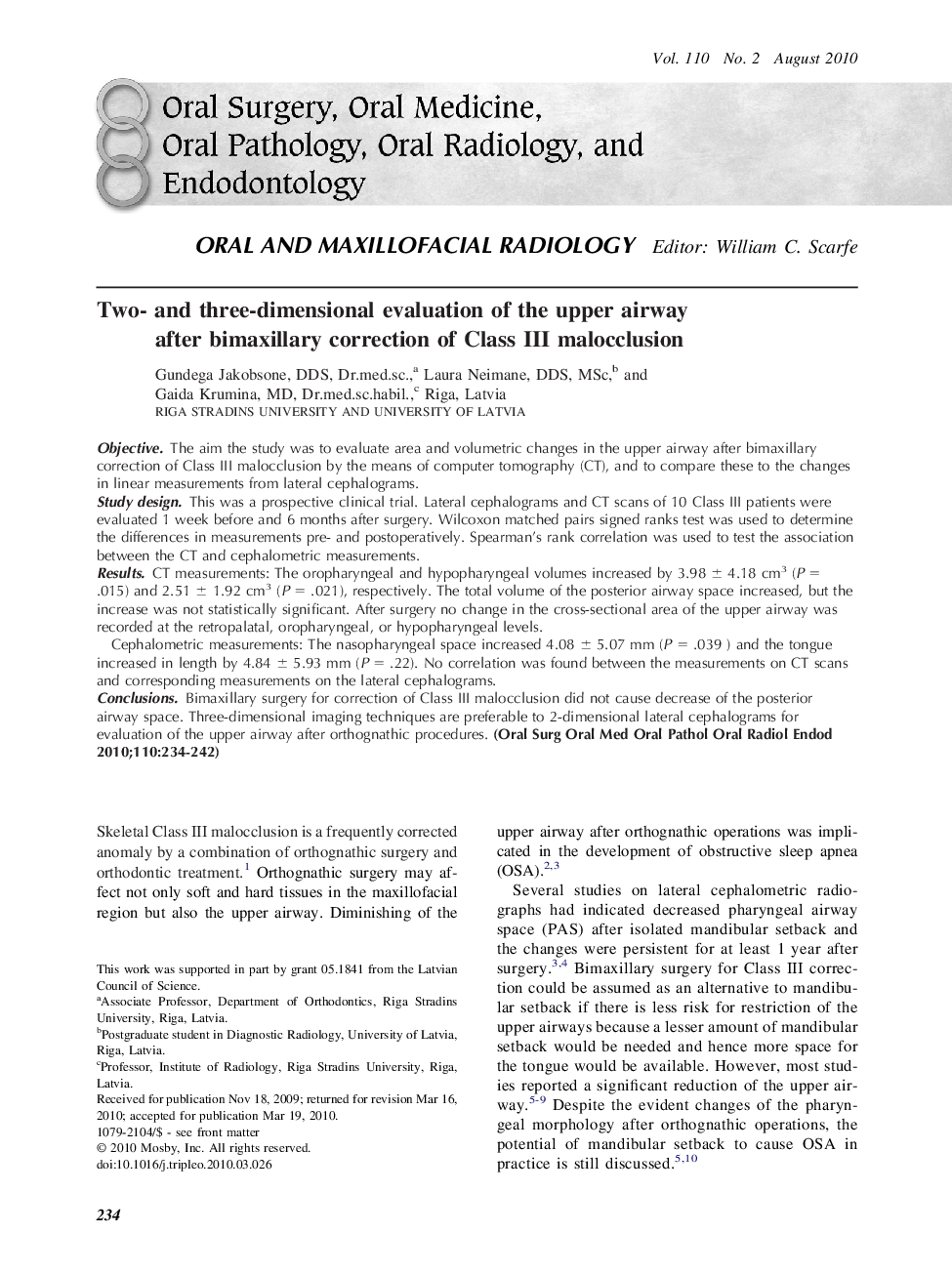| Article ID | Journal | Published Year | Pages | File Type |
|---|---|---|---|---|
| 3167522 | Oral Surgery, Oral Medicine, Oral Pathology, Oral Radiology, and Endodontology | 2010 | 9 Pages |
ObjectiveThe aim the study was to evaluate area and volumetric changes in the upper airway after bimaxillary correction of Class III malocclusion by the means of computer tomography (CT), and to compare these to the changes in linear measurements from lateral cephalograms.Study designThis was a prospective clinical trial. Lateral cephalograms and CT scans of 10 Class III patients were evaluated 1 week before and 6 months after surgery. Wilcoxon matched pairs signed ranks test was used to determine the differences in measurements pre- and postoperatively. Spearman's rank correlation was used to test the association between the CT and cephalometric measurements.ResultsCT measurements: The oropharyngeal and hypopharyngeal volumes increased by 3.98 ± 4.18 cm3 (P = .015) and 2.51 ± 1.92 cm3 (P = .021), respectively. The total volume of the posterior airway space increased, but the increase was not statistically significant. After surgery no change in the cross-sectional area of the upper airway was recorded at the retropalatal, oropharyngeal, or hypopharyngeal levels. Cephalometric measurements: The nasopharyngeal space increased 4.08 ± 5.07 mm (P = .039) and the tongue increased in length by 4.84 ± 5.93 mm (P = .22). No correlation was found between the measurements on CT scans and corresponding measurements on the lateral cephalograms.ConclusionsBimaxillary surgery for correction of Class III malocclusion did not cause decrease of the posterior airway space. Three-dimensional imaging techniques are preferable to 2-dimensional lateral cephalograms for evaluation of the upper airway after orthognathic procedures.
